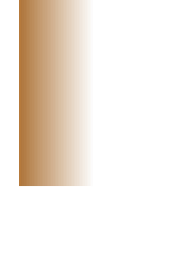Geoscience Reference
In-Depth Information
8
(a)
(b)
(c)
Figure 8.3
(a) Measuring an uneven plane with the aid of a clipboard. Remember to ensure that any metal
clips are not affecting the measurement. (b) Measuring the dip of an irregular fault by sighting using the
compass-clinometer. Inset shows orientation of the compass-clinometer and detail of the line of sight. (c) A set of
subsidiary fractures (thin arrows) with a consistent angular relationship to the main fault zone (thick arrows).
These are Riedel fractures (Section 8.2.2), evidence that the fault downthrows to the right. (a and c: Tom W.
Argles, The Open University, UK. b: Angela L. Coe, The Open University, UK.)
orientations are ultimately related to overall fault zone motion.
Even if the bounding faults are not exposed, these fault sets
may indicate both the orientation and sense of motion of the
main fault zone (see Section 8.2.2).
The orientation of joints can also provide insights into the
regional stress fi eld. Shear joints commonly occur in conjugate
sets, in orientations mirrored across σ
min
and σ
max
, forming
characteristic 'X-shaped' patterns (Figure 8.4a); conjugate sets
of normal faults are also quite common. Joint sets can be
measured to yield information on either local or regional stress
regimes (e.g. in a single fold structure, Figure 8.4b; or due to
unloading of ice sheets or rock overburden, Figure 8.4c). When
fractures are mineralized (forming veins), the mineral fi bres

























